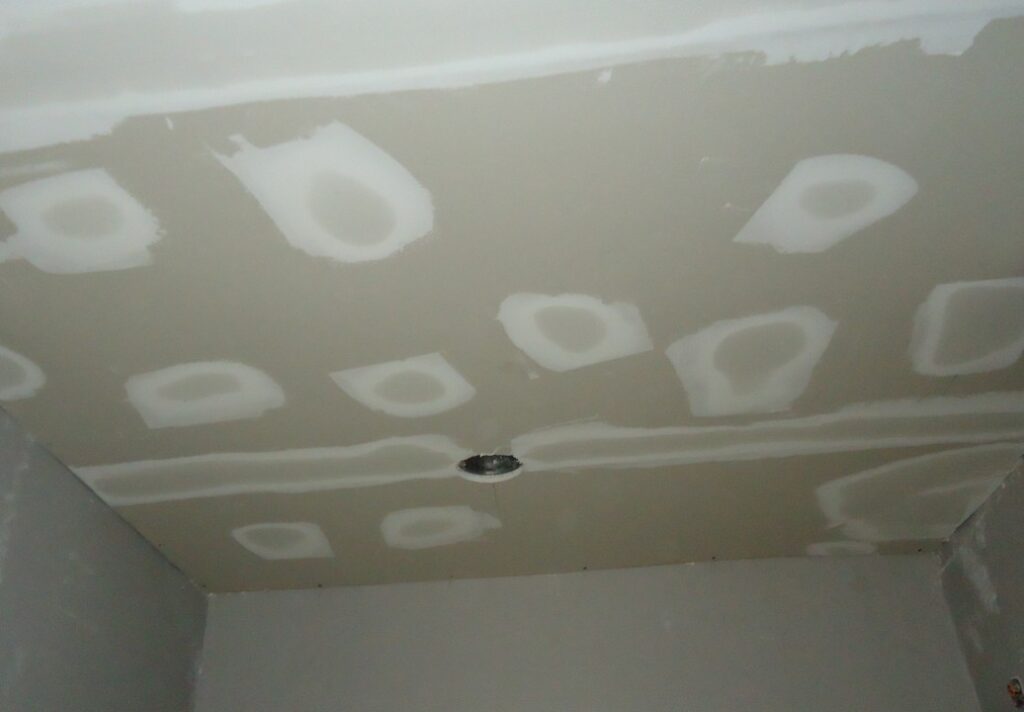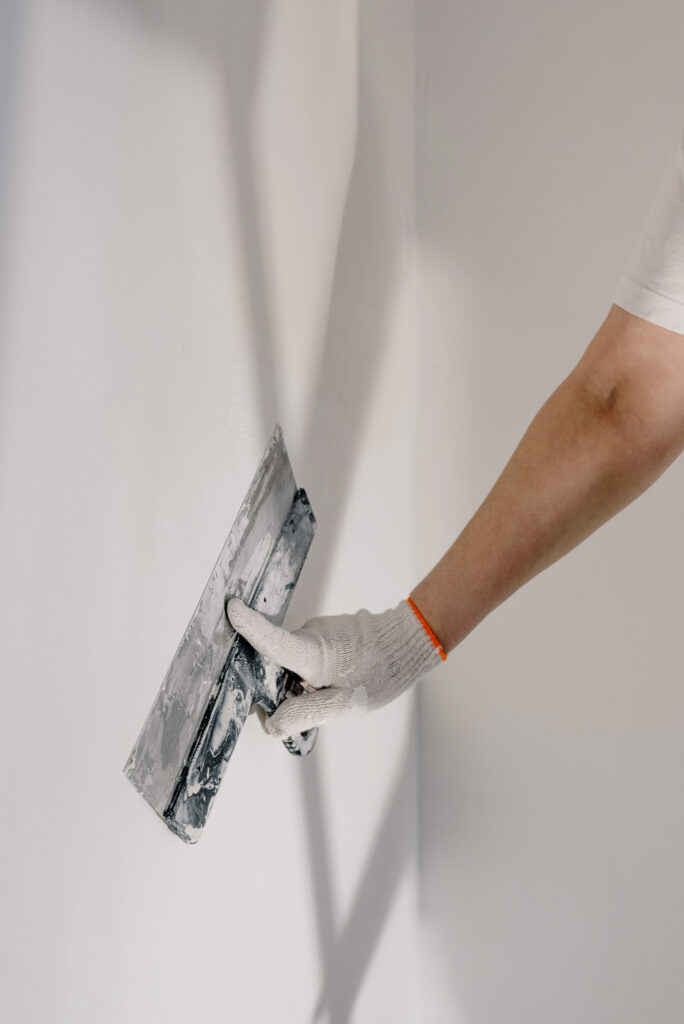Suppose you made a new house or relocated your house to another place. Or if you decided to repaint your complete house. In all these situations, small cracks, holes, and breakage on the wall is a big headache because it makes the overall lousy appearance of the house. Here, two compounds can help you counter these breakages and holes in the drywall. These two compounds are:
- Spackle compound
- Joint compound
This article will give you information about spackle vs. joint compound. These two essential products can solve your problems related to the imperfections of your dry walls. However, when you have two options to solve the same problem, choosing one product over another isn’t easy. The information presented in this article will provide a good overview of these compounds, which will help resolve your problems. Following is more information on these two compounds in detail.
Spackle Compound
Spackle compound is a wall patching putty known for covering up small holes, cracks, and other rough and defective surfaces. The spackle compound in America and other European countries is called spackling or wall-patching paste.
The joint compound creates a smooth surface with barely perceptible seams with a little finishing effort. Because it dries quickly, this application has better options than spackle. However, deciding when to use a joint compound instead of a spackle is usually easy.
Regarding home renovation projects that involve repairing walls, Spackle and joint compound are two popular materials that are often used interchangeably. While Spackle and joint compound are used to fill holes and cracks in walls, they have different properties and are best suited for different types of repairs. Spackle is a lightweight, pre-mixed paste ideal for filling small holes and cracks, as it dries quickly and can be sanded down to a smooth finish.
On the other hand, a joint compound is a heavier, dry powder that needs to be mixed with water before use. It is typically used for larger repairs, such as covering seams and taping drywall joints and can be sanded down to a perfectly flat finish. Spackle is generally a better choice for small repairs, while joint compound is more suitable for larger repairs or for covering seams and joints between drywall panels. However, the best choice for any specific project will depend on the size and type of repair needed, as well as the homeowner’s or contractor’s individual preferences.
Ingredients of spackle compound
Spackle compound consists of 3 ingredients. These three ingredients are:
- Gypsum Plaster
- Hydrated Calcium Sulfate
- Glue
These are the most common ingredients used in making the spackling compound. But in the modern world, other components are also used in the compound. In the base of these ingredients, you can define the type of that spackle compound.
These ingredients are:
- Vinyl
- Acrylic
- Sodium silicate
- Epoxy

Types of spackle compound
As you read earlier, many types of spackle compounds are present in the market; sparkling compounds are classified by their ingredients. So in the following, some commonly used spackle compounds are discussed.
Vinyl spackle compound
This spackle compound uses vinyl and elastic polymer materials, giving this compound excellent strength. The application method of vinyl spackle is different because this type of spackle is generally used in multi-layer formation. When one layer of spackle is pasted, you have to wait until this layer dries out. After this, you can paste the second layer of vinyl spackle. The use of this spackle is as under:
- Filling deep holes
- Deep gashes
- Acrylic spackle compound
Acrylic spackle compounds are used to cover nearly all types of deeper holes on almost every type of material like:
- Drywall
- Bricks
- Wood
- Stone
- Plaster
In the qualities of this compound, it is included that it is a non-shrinkable spackle compound.
Sodium silicate spackle compound
This spackle compound soudium silicate is used with a solid adhesive mixture. This is the best choice if you need a quick repair of a hole. Mostly this type of compound uses to cover small holes.
Empoxy spackle compound
This type of spackle is mainly used for outdoor applications. Because in the epoxy material, water-resistant abilities are present. But applying this type of spackle can be a tricky job. Because epoxy spackle compound consists of two separate items, which are:
- Resin
- Hardliner
One condition for using this compound is that you have only one option to mix these two items before using it. If you spare this compound for later use, it will dry out and can not be used again.
Joint compound
Joint compound is another material used for filling holes in the drywall. The only difference between the joint compound and the spackling compound is the ingredients used in this filling material. In this compound following materials are used:
- Ground Gypsum
- Sulfate Mineral
This is a widespread material that is present around us. These two ingredients are also present in the dinner sets and toothpaste. Joint compounds are present in the market in two forms:
- Premixed form
- Powdered form
The other name famous in the market for this compound is joint mud. In this compound, the third ingredient used is the additives that give this extra compound strength from the moister and environmental damage. This compound’s typical drying time starts from some minutes to 24 hours. Compounds take a different amount of time to manufacture depending on the volume of the materials used.
Types of joint compound
Like spackle compounds, this compound also has various types. Powder and premixed forms are most commonly used in all of these types.
Premixed joint compound
All the compound ingredients are readily mixed in this type of joint compound. You buy it and use it wherever you want to use it. This type of joint compound takes longer than usual to completely dry. In this joint, there is more classification present in the market, which is listed below:
- Taping joint compound
- Joint compound for all-purpose
- Lightweight joint compound for all-purpose
Powdered joint compound
This is the most commonly used joint compound. The other name for this type of compound are:
- Powdered mud
- Hot mud
Unlike premixed compounds, this type of joint compound has a quick-dry ability. This compound is mixed just before applying it to the holes. If, after mixing, it will spare some time, then it will be useless. The handling and usage of this compound are effortless, and anyone with little or no expertise can apply this compound to the walls.
Spackle vs. joint compound which is the best for you
After reading detailed information about spackle vs. joint compound, you have a pretty good idea about these two compounds. The purpose of both of these compounds is nearly the same. However, which type of compound you want to use depends on you. Suppose you want a recommendation for using which compound, then it is recommended that you choose according to the work currently in front of you. You can rely on the spackling compound if you have small areas to cover or have some holes or cracks to fix. For the larger project, hot mud is more beneficial than spackle compound.
FAQs
- Would it be better to use a joint compound or a spackle compound?
In addition to covering the seams between drywall sheets, a joint compound is an excellent choice for fixing large holes and cracks. While spackle works best to cover nail holes on your wall and other minor imperfections, it is inadequate for larger projects.
- What is the difference between spackling and joint compound?
Spackle and joint compounds are used to finish the wall by filling the holes. The only difference between these compounds is that both use different types of materials as basic ingredients.
